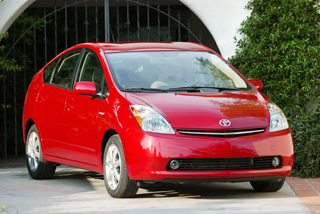
Making whisper-quiet hybrid-electric vehicles louder to protect unsuspecting pedestrians is not as easy as it sounds, the leading U.S. seller of HEVs says.
Noise is one thing, says Martha Voss, Toyota Motor Sales U.S.A. Inc.’s spokeswoman in Washington. Making the link between a noise and a vehicle is another.
“Different studies have shown different things,” Voss tells Ward’s following Wednesday’s introduction of the Pedestrian Safety Enhancement Act. “We’re working really hard to figure out what cues would work.”
The bill gives the Secretary of Transportation two years to “determine the best means to provide the blind and other pedestrians with information about the location, motion, speed, and direction of vehicles,” says a statement issued by its authors, Reps. Ed Towns (D-NY) and Cliff Stearns (R-FL).
The Secretary then would report to Congress and within 90 days establish a minimum safety standard for all new vehicles sold in the U.S. Auto makers would be compelled to comply within two years.
When running in electric-only mode, HEVs can be “extremely dangerous,” particularly for the blind, the statement says.
“The blind, like all pedestrians, must be able to travel to work, to school, to church and to other places in our communities without being injured or killed,” adds Marc Maurer, president of the National Federation of the Blind (NFB). “The blind of America will do everything in our power to ensure its swift passage.”

Toyota is sympathetic, but Voss warns against a rush to judgment.
“You can make a lot of mistakes with the solution,” she says. “It’s a difficult problem to attack because while it would seem to be simple, it’s not that simple. Things like chirping or chimes or something like that are not identified by test subjects as a vehicle.”
Meanwhile, quiet operation is a key vehicle attribute for some consumers.
“You don’t want the car to be annoying, either,” Voss says.
Toyota, which claimed nearly 75% of the U.S. HEV market in 2007, according to Ward’s data, is working toward a solution in consultation with the NFB, National Highway Transportation Safety Admin. and Society of Automotive Engineers.
The SAE, which has been focused on the issue since early 2007, has set up a subcommittee and three taskforces to identify: Which pedestrian demographics need assistance; what target sound level and sound type; and the effect of driving conditions on various sounds.
These bodies are expected to issue a report by year’s end. But in a background paper released April 9, the SAE echoes Toyota’s caution regarding the issue’s scope.
“Even though the subcommittee’s initial focus is only on hybrid vehicles, any data collected or generated in understanding the issues could eventually include other vehicle types,” the paper warns.
Says Voss: “It’s not just a hybrid issue, really. There are quiet cars all around. And in the future, there might be similar issues with a lot of alternative-fuel vehicles, including all-electric and fuel cell.”
The introduction of the Pedestrian Safety Enhancement Act also prompts a response from NHTSA, which promises to convene a meeting with industry stakeholders this spring.
Deputy Administrator James F. Ports Jr. suggests some urgency by noting quiet vehicles, such as HEVs, are “entering the fleet in ever-greater numbers.”
In 2007, U.S. consumers bought more than 352,000 HEVs – a 39.1% increase over 2006, according to Ward’s. And despite a market that was down 8.1% through the first quarter of this year, HEV sales rose 7.6%.




